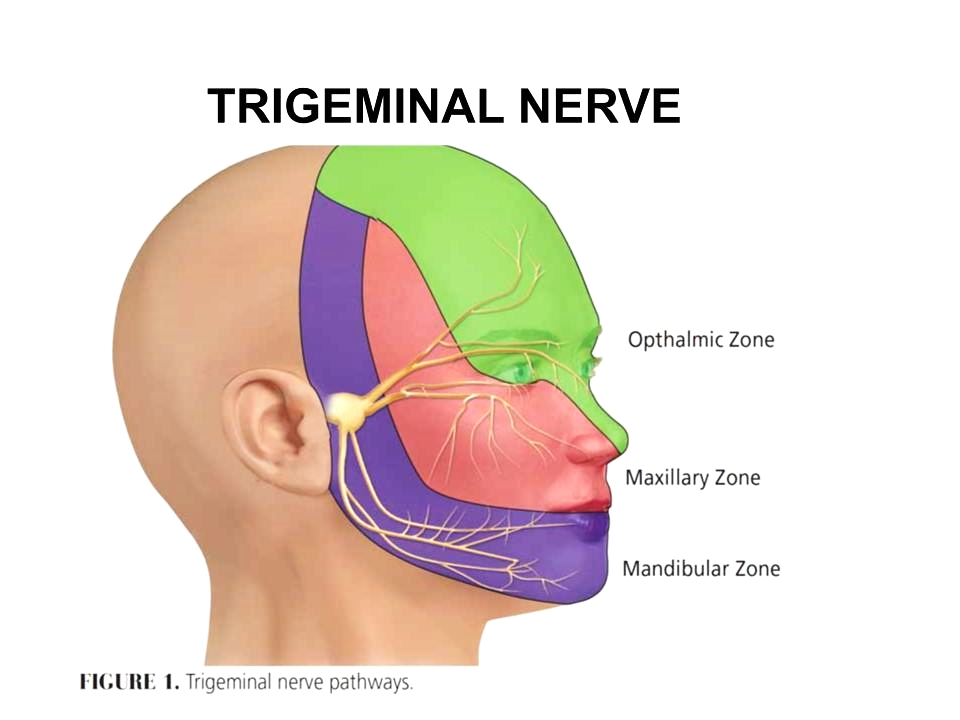TRIGEMINAL NERVE
The trigeminal Nerve, also known as cranial nerve V, is the fifth of 12 cranial nerves. Its primary function is to provide sensory and motor innervation to the face. Pain sensations from the front of the head and face as well as the anterior skull contents, is mostly carried by the trigeminal nerve.
The trigeminal nerve consists of three branches on either side of the face. The different branches are ophthalmic ( V1), maxillary (V2) and mandibular (V3) nerves. Each branch has a different responsibility for sensory innervation at a specific location over the face.
The trigeminal nerve provides both sensory and motor innervation. More specifically the sensory information that includes touch, pain, and temperature. The sensory information is then relayed, through a series of “check points” back to the brain. The motor portion is carried by (V3) and supplies muscles that assist with chewing (masseter, temporalis, etc.)
Disorders of trigeminal nerve include trigeminal neuralgia, post traumatic neuropathy and postherpetic neuralgia.
A detailed history in addition to a thorough physical examination is needed to diagnosis and/or treat disorders of the trigeminal nerve.
By: Jordan Shankle, PA
May 26, 2025 Uncategorized

